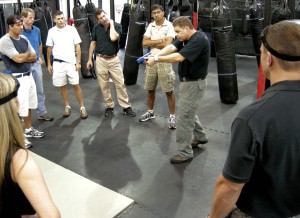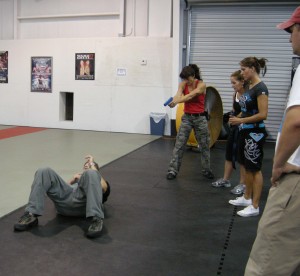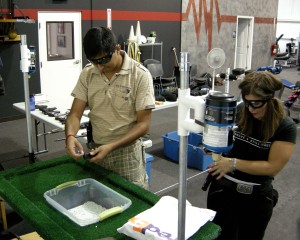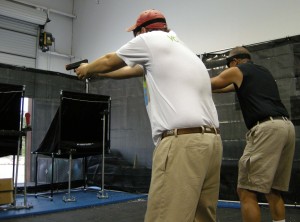We talked in class last night about a very important concept we term the “failure drill”. A lot of people bristle at the idea of a failure drill, and don’t like the negative connotations associated with the terminology. I won’t get into all that. The real concern is this: how often do we have a backup plan (A, B, C, or even D) when a technique fails? The tendency of many people is to beat the dead horse—they keep working on the technique in a scenario in the event that it will eventually succeed. Now, I am not talking about the process of learning a brand new technique. That is totally different. I expect failures as I work to acquire the new skill and get a feel for it through repetition. I am talking about the situations we create in training wherein we have to use some defensive tactic, or even a pre-emptive, offensive maneuver, and due to timing, body position, or a whole litany of other reasons, the technique just fails. So, we try, try again as seeking a new result from the same actions—hey, isn’t that the definition of crazy? I’m sure the adversary is going to patiently wait while we get it right.
Why not move onto a new technique? Many of us were simply not taught that way. We were not taught what it means to flow, which is one of the pitfalls of static training. This is not to say that static training is bad. On the contrary, it is a necessary step in the process of learning flow. Nevertheless, many people get stuck in static training and camp out forever. Training must evolve from static, to changing single variables, to something that mimics real life: dynamic flow. Having more than one option to be able to branch to in a given situation is very important. Then, having too many options gets into the whole Hick’s law problem regarding slower reaction times. We must find balance!
Flow can be encouraged and facilitated by good instructors. A positive training experience helps students the most, but some learners are going to have a more challenging time becoming dynamic than other students. I find those that are more rigid in their thinking patterns, highly self-critical, and very analytical, will have the most difficult time. I can say that because this used to be me! With the right mentor, I was able to relax and flow more than I ever thought possible. Luckily, being dynamic in one area truly carries over into others (most importantly, the street). I remember reading an inspirational little book about Parkour practitioners. They talked about the practice of free running, and how it helped them see more possibilities and make decisions more rapidly in other areas of life. The beauty of tapping into our subconscious processing! Flowing with the body helps the mind flow. We are energy beings, after all, made for movement—really before we are consciously thinking about anything! I feel myself about to launch off onto some crazy tangent, so I will stop there. Suffice it to say, it’s important to jump into the flow.









